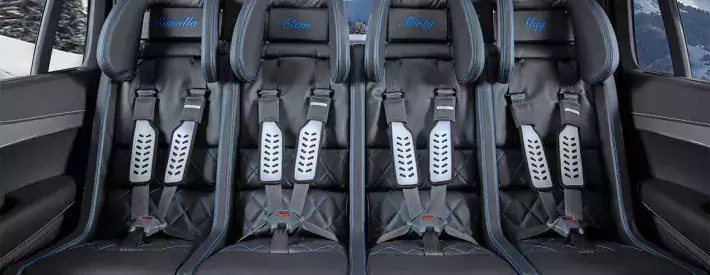Child’s Play: Why you need to pay attention to kid’s seats

MOT seat belt inspections are getting a bit more complicated with the emergence of new child restraints so we all need to stay up to date
Ever had a vehicle with child seats roll into one of your testing bays and wondered how you’re meant to inspect it? If that’s the case then read on.
A child seat installed with the existing seatbelt of the vehicle securing it in place shouldn’t have that seat belt unbuckled for inspection. An area most testers are confident in, the child seat position is noted through the non-component advisory list to report a non-inspection and the tester gets on with their day.
Motorists have expressed dissatisfaction with items being listed, but this can be prevented by clear communication either through waiting room signage and/or social media content. And if that isn’t enough by directing them to the DVSA and the normal complaint procedure.
Seats fitted using ISOFIX points are pretty straightforward. Simply inspect the belt and using the buckle as if the child seat isn’t there. An attachment such as ISOFIX also creates the requirement to inspect the child seat restraint as detailed within the MOT manual. This area appears to have caused heated debate on social media platforms and what qualifies as testable items. Some testers incorrectly arguing the seat is a non-component advisory item irrespective of fixing method.
But the debate and complexity doesn’t stop there, muddling matters further is the arrival of the multiple child restraint.
The Multimac is an excellent example. A bench style seat holding three or four occupants installed on top of the existing seats in the vehicle, usually utilising fixings that attach to the seat buckle anchorage, but can in some cases require the floor to be drilled to accept fixings so the child restraint can be safely secured. Inspection of the vehicle’s factory belts is now prohibited by the presence of the child seat, meaning the non-component advisory notice should be applied to each seat the restraint conceals.
The child restraint is permanently fixed into position according to the guidance in the MOT inspection manual, meaning each restraint within the unit should be inspected.
A manual advisory could be given in addition to the non-component advisories to record the presence of a permanently fixed multiple child restraint and demonstrate the inspection has been completed correctly. Noting this information in the usual fashion for the authorised test station records would be best practice should the need for explanation arise.
Vehicle technologies are changing dramatically and MOT Testers need to stay up to date of the latest developments, but it goes a lot further than just the mechanics of vehicles.




